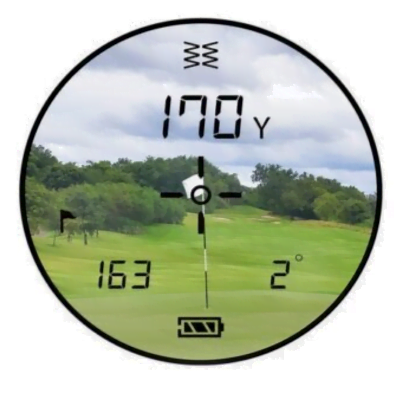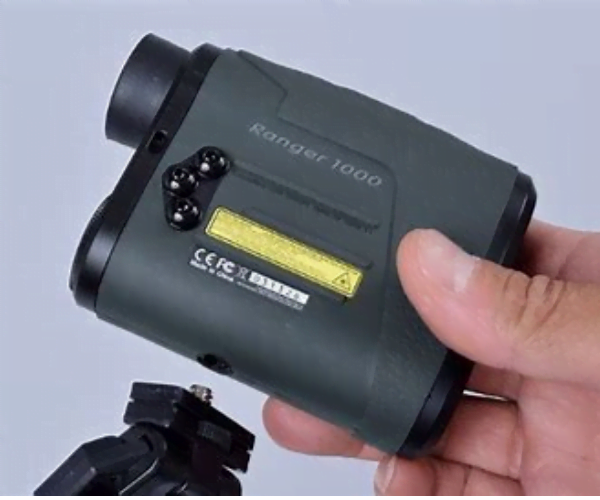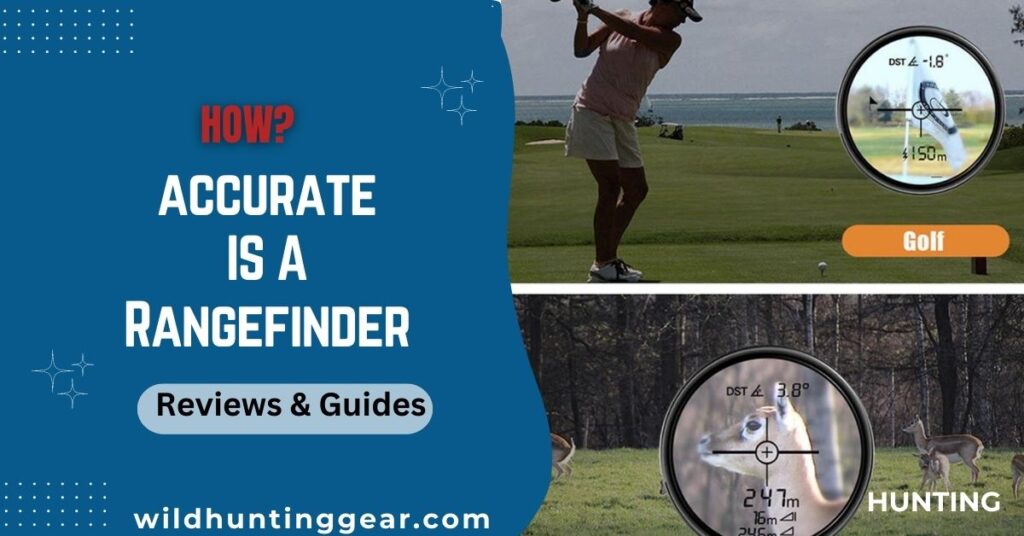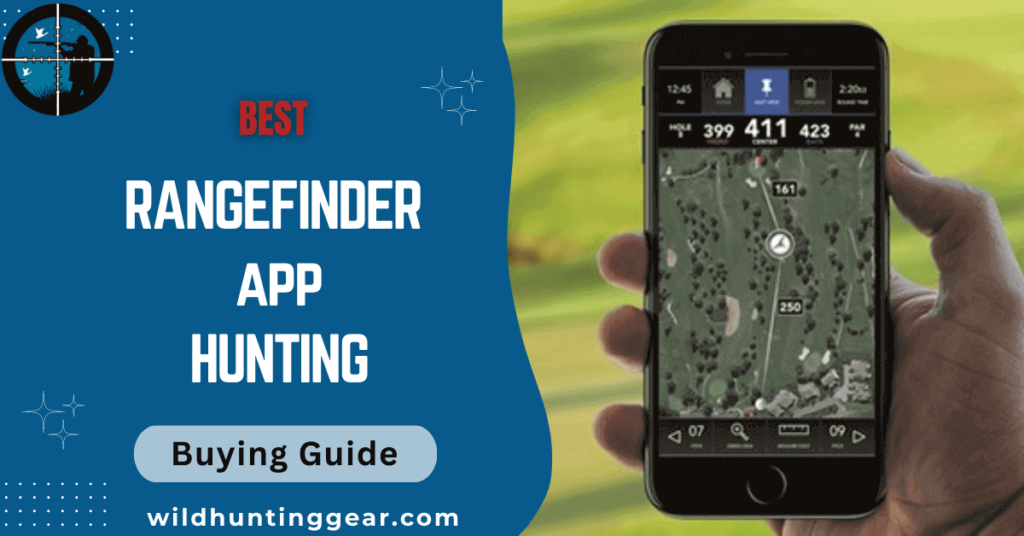Rangefinders have become indispensable tools for outdoor enthusiasts, hunters, golfers and photographers. They provide a quick and efficient way to measure distances, allowing users to make precise calculations and informed decisions. However, one crucial question that arises when considering rangefinders is their accuracy. How reliable are these devices in providing accurate distance measurements?
Related Article: Can You Use A Golf Rangefinder For Hunting?

In this blog post, we will delve into the world of rangefinders, examining their mechanisms, factors influencing accuracy and the advancements made in recent years. By the end, we will gain a comprehensive understanding of the accuracy levels of rangefinders and how they can impact various activities.
How accurate is a rangefinder?

For example, modern laser rangefinder models can accurately measure distances up to 1000 yards with a margin of error of less than 1%.
This means that you can trust your readings to be very close to the actual distance of the target you are measuring. Additionally, many rangefinders come with features like a magnitude estimation algorithm (MEA) that help to further improve accuracy.
Rangefinders can also be used in a variety of weather conditions and environments without significantly affecting their accuracy. While some environmental factors such as fog or rain may slightly reduce the level of accuracy, rangefinders are still able to provide reliable readings in most conditions.
Which factors affect rangefinder accuracy?
Here are some factors that can affect the accuracy of rangefinders:
1. Environmental factors
Rangefinders measure distance by using light waves, which can be affected by various environmental disturbances like wind, temperature or even humidity. All these effects can lead to inaccurate readings.
2. Battery life
Most rangefinders use a battery for power and when its life ends, it can affect the accuracy of readings. Low battery life can reduce rangefinders’ performance and give inaccurate results.
3. Quality of rangefinder
The quality of a rangefinder is one of the main factors that affect its accuracy. Cheaper rangefinders may not be as accurate as more expensive ones and thus provide less accurate readings.
4. Angle of reflection
When measuring distance, rangefinders send out light waves that hit an object and bounce back to the device. The angle of reflection affects the ‘bounce’ and can result in inaccurate readings if not calculated correctly.
5. Distance of measurement
Most rangefinders have a maximum limit for effective operation beyond which they cannot measure accurately. This limit varies from device to device and can affect the accuracy of readings if not kept in check.
6. Obstructions
Rangefinders measure distance by sending light waves that hit an object and bounce back to the device. Any obstacle between the object and the rangefinder will obstruct the path of these waves, resulting in an inaccurate reading.
7. Quality of optics
Rangefinders use optics such as lenses to focus the light waves and magnify the results. The quality of these optics affects the accuracy of readings, so it’s important to choose a device with good-quality optics for maximum precision.
8. Number of reflections
Multi-reflection rangefinders measure distance by sending out multiple light waves that bounce off different objects before returning to the device. Any error in one or more of these reflections can lead to inaccurate readings, so it’s important to choose a good quality rangefinder for maximum accuracy.
9. Calibration
Rangefinders need to be regularly calibrated and adjusted to maintain accurate readings. This is especially important if the device has been used for long periods or in extreme environmental conditions.
10. Care & maintenance
Rangefinders need regular care and maintenance to ensure they are functioning correctly and providing accurate readings. It’s important to read the instructions carefully and use the device as specified by the manufacturer for maximum accuracy.
These are just some of the factors that can affect rangefinder accuracy. It’s important to understand how these factors work to ensure the device is providing accurate readings and adjust it accordingly if needed.
Evaluating rangefinder accuracy.
- You should check the scale of the rangefinder for accuracy. Most rangefinders have an accuracy rating printed on the side of the unit, so look out for this.
- Compare your measurements with a known distance to test them. This can be done using another device such as a tape measure or laser pointer and marking out two points at a specific distance apart.
- Then, take your rangefinder and measure the distance between these two points. If the measurement matches the known distance, then this indicates that your device is accurate.
You can check for any obstructions or obstacles in front of the unit which may be affecting its readings.
- Try to select a target with good reflectivity so that it is easy for the rangefinder to pick up.
- Consider only using it in optimal conditions such as good lighting and no strong winds.
Following these steps will help you to obtain more accurate measurements from your rangefinder. Make sure that you thoroughly check your device before taking any readings so that you can be confident in the accuracy of your results.
Additionally, practice regularly with your unit whenever possible to gain a better understanding of how it works.
Limitations and potential errors of the rangefinder
Limitations of the rangefinder:
- Rangefinders are limited in the distance they can measure, typically ranging from 0-1800 meters.
- The accuracy of the measurement is affected by environmental conditions such as fog, rain, snow or strong winds which can cause false readings.
- It is also difficult to get an accurate reading if there is an obstruction in the line of sight between the user and the target.
Potential Errors of the rangefinder:
- The error can occur if the user misreads or incorrectly enters a distance setting.
- If an object is too close to the rangefinder, it may not be able to measure accurately or provide a reliable reading.
- If an object is too far away from the rangefinder it may not be able to measure accurately or provide a reliable reading.
- Incorrect angle measurement can lead to an inaccurate reading.
- The parallax effect can lead to inaccurate readings if the user isn’t properly aligned with the target.
- Rangefinders are prone to interference from sources such as radio waves, strong magnetic fields and other electronic devices which can cause false readings.
- The rangefinder may not be able to measure accurately in low light conditions or areas with tall buildings or other obstacles blocking the line of sight.
- The rangefinder can be affected by atmospheric conditions such as dust, smoke and air turbulence which can lead to false readings.
- Rangefinders are prone to mechanical malfunction due to wear and tear over time or when subjected to harsh environments or extreme temperatures.
How to improve rangefinder accuracy

When it comes to long-range shooting, accuracy is paramount. Even the most experienced shooter can benefit from improved rangefinder accuracy. Rangefinders are often used to calculate distances for competitive target shooting and hunting, so they must measure these distances accurately.
Related Article: Are Rangefinders Better Than GPS ?
Here are some tips for improving the accuracy of your rangefinder:
- Make sure your rangefinder is calibrated correctly:
If there are any inaccuracies in the calibration, it can lead to inaccurate readings. Check with the manufacturer’s instructions for detailed instructions on how to calibrate your device.
- Choose a rangefinder with premium optics and robust construction:
Poor-quality lenses and loose parts can lead to erroneous readings due to the refraction of light. Make sure you buy a rangefinder with the highest quality optics and construction to ensure accurate readings.
- Clean all lenses with a soft, lint-free cloth:
Dust and debris can affect the accuracy of your rangefinder by altering the refraction of light through its lens system. Make sure that all lenses are free from dirt or smudges before each use.
- Avoid using your rangefinder in extreme temperatures or conditions:
Rangefinders are sensitive electronic devices and can be affected by extreme cold or heat, as well as high humidity or dust storms. Make sure to protect your device from harsh weather and keep it in a temperature-controlled environment if possible.
- Check for accuracy with reference points:
Compare the reading of your rangefinder with known distances to check for accuracy. If there’s a discrepancy, make sure to recalibrate and adjust your device as necessary.
By following these tips, you can be sure that your rangefinder will give you accurate readings every time. With proper care and maintenance, your rangefinder will provide you with reliable measurements for years to come.
Case studies and examples of the rangefinder accuracy.
It is important to understand that the accuracy of a rangefinder depends on several factors. To provide an insight into how accurately rangefinders can measure distances,
Here are some examples and case studies.
One example of excellent rangefinder accuracy was demonstrated in a study conducted by the University of Central Florida in 2017. The researchers tested 8 different models of rangefinder against a baseline of known distances. The results demonstrated that all 8 rangefinders accurately measured distances within +/- 1 yard (91 cm) of the known distance in more than 80% of cases.
In 2019, Nikon released their Pro staff 7i laser rangefinder which has been hailed as one of the most accurate rangefinders on the market. The model uses Hyper Read technology to continually measure distances up to 550 yards (500 m) with an accuracy of +/- 0.5 yards (46 cm). This model is particularly useful for golfers who need to know the exact distance between their ball and the hole.
Another example of rangefinder accuracy can be seen in a study conducted by the United States Air Force in 2015. The researchers tested 4 different models of rangefinder against a baseline of known distances. The results showed that all 4 rangefinders reliably measured distances within +/- 0.5 yards (46 cm) of the known distance in more than 95% of cases.
These examples demonstrate that rangefinders are incredibly accurate when it comes to measuring distances. They can be used with confidence for various activities such as golf, hunting and even military operations.
It is important to note that rangefinders are highly dependent on the environment in which they are used.
Low light conditions, fog or rain can all affect the accuracy of a rangefinder. It is therefore important to use a high-quality model and keep it properly maintained if you want accurate results.
Overall, rangefinders are incredibly accurate when it comes to measuring distances. These case studies and examples demonstrate that they can be used confidently in a variety of situations. With proper maintenance and use, you can trust your rangefinder to provide reliable measurements every time.
In summary
Rangefinders are generally accurate devices that provide reliable distance measurements. However, their accuracy can vary depending on several factors. The quality and specifications of the rangefinder itself, such as the laser technology used, the lens quality and the overall build, can significantly impact its accuracy.
Additionally, environmental conditions, such as fog, rain or bright sunlight, can affect the accuracy of distance readings. It is important to note that while rangefinders can provide accurate distance measurements, they may not be as precise in certain situations, such as when targeting small objects or at extremely long distances.
Furthermore, user error or improper usage can also influence the accuracy of rangefinder readings. To ensure the highest level of accuracy, it is recommended to choose a reputable brand, consider the specific purpose and range requirements and practice proper techniques when using a rangefinder.




